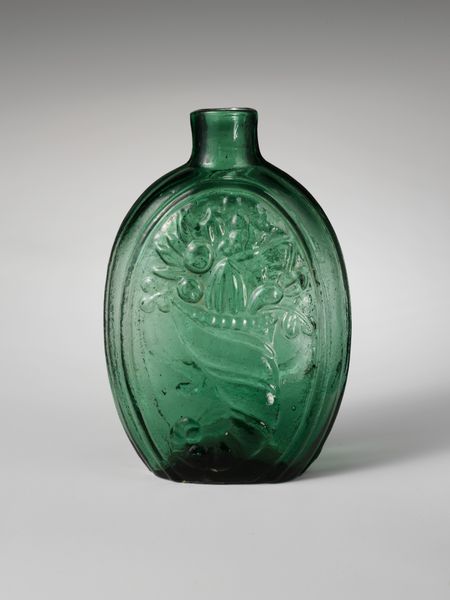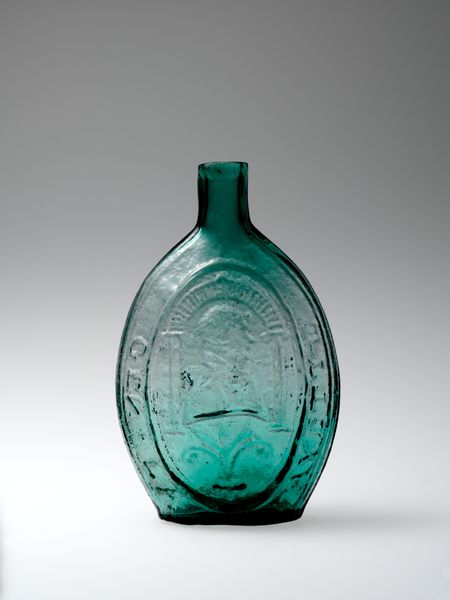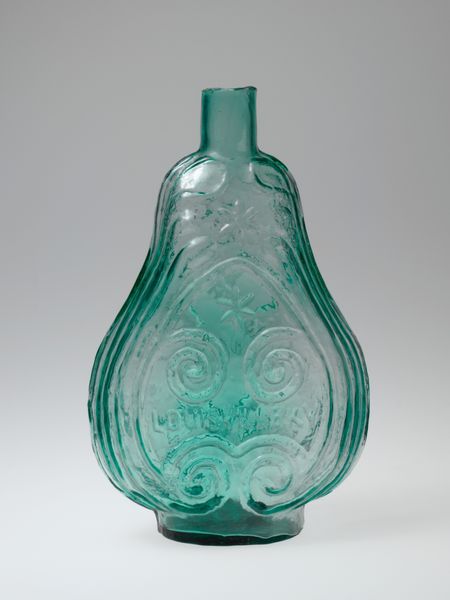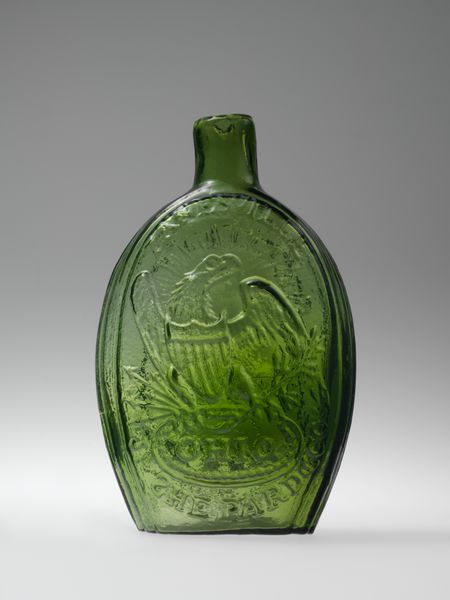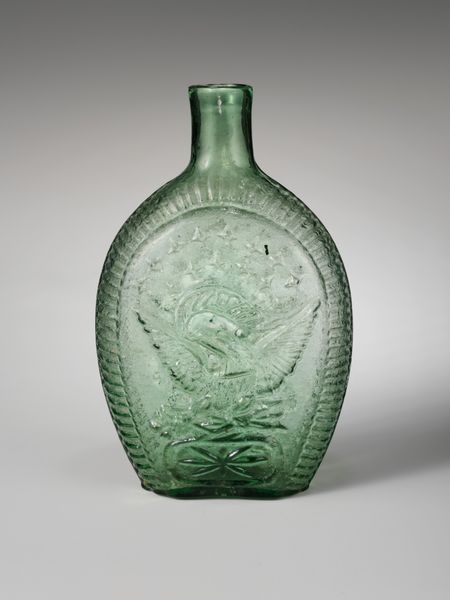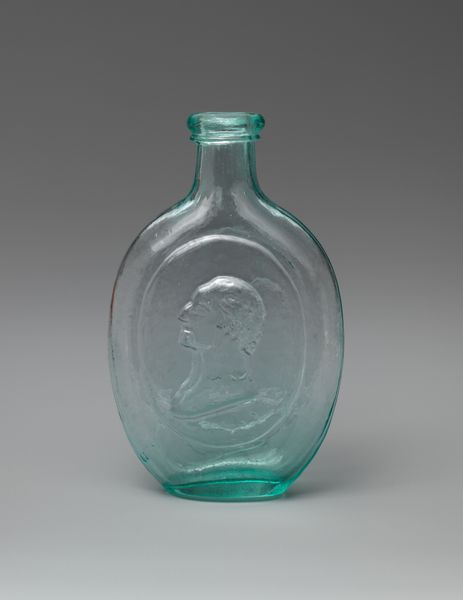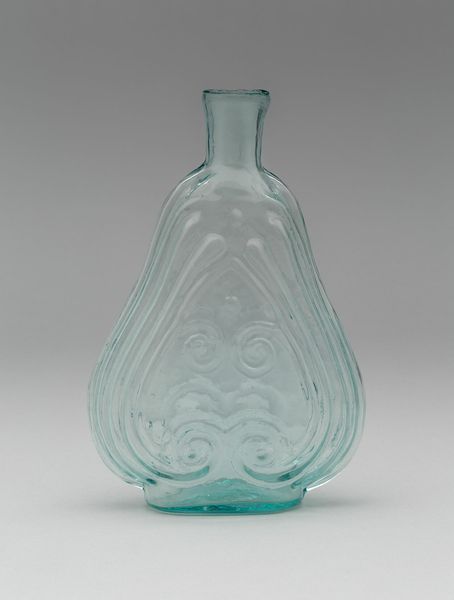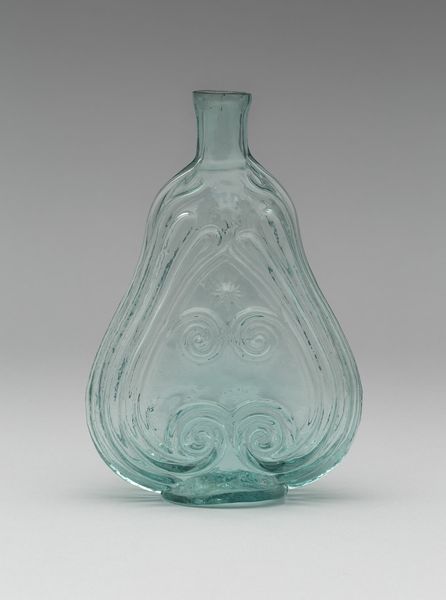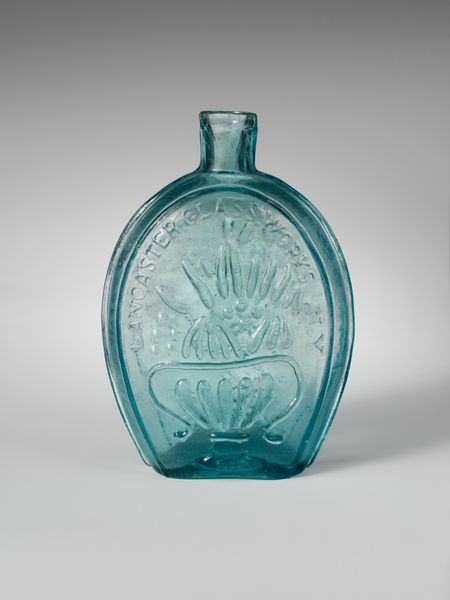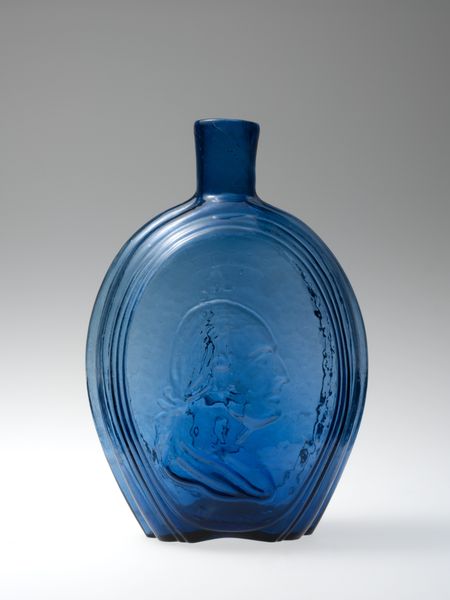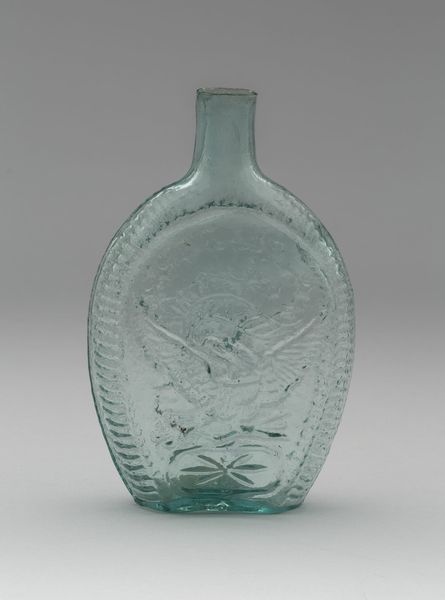
glass
#
neoclacissism
#
glass
Dimensions: H. 5 1/2 in. (14 cm)
Copyright: Public Domain
Editor: Here we have a charming emerald-green glass flask, created by the Coventry Glass Works around 1824. It's decorated with what appears to be a molded basket of fruit. It feels somehow both rustic and refined at the same time. What stands out to you about it? Curator: Well, beyond its visual appeal, this "Figured Flask" is a fascinating artifact for understanding the social and cultural landscape of the early 19th century. How do we reconcile the apparent “rusticity” with the clear nod to Neoclassical forms and imagery? Editor: Good question! The basket and fruit design feels...homey. But the shape is classical. Curator: Precisely! Flasks like these were increasingly available due to advancements in glass production. So, while Neoclassicism was popular among elites who wanted to link themselves to ancient ideals, the rise of factories made decorative items like this available to a growing middle class. It suggests the spread of those ideals downwards. Editor: So it's about accessibility and aspirations? Curator: Absolutely. Think about how decorative arts entered American homes – were they merely aesthetic additions or silent signifiers of a desired social standing? Was this flask possibly a symbolic stand-in for something grander? What's *in* the flask matters too, and who sees you taking a swig. These are items meant to be seen in public. Editor: That's really interesting. I was just seeing it as pretty, but it says a lot more, doesn’t it? It’s democratizing classist visual cues. Curator: Indeed. And that makes this seemingly simple flask a potent vessel for understanding the public role of art in shaping social identities. The rise of industry didn’t just change economies but also mindsets and cultures. It’s a piece that quietly embodies significant shifts.
Comments
No comments
Be the first to comment and join the conversation on the ultimate creative platform.
